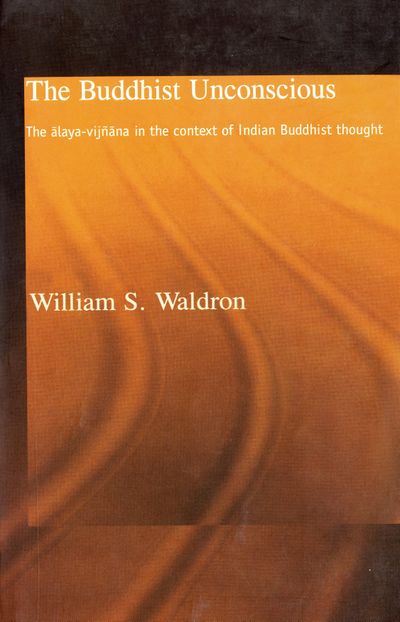- Prefacexi
- Acknowledgmentsxv
- Thematic introduction: a Buddhist critique of the construction of self and world1
- PART I
The background and context of the ālaya-vijñāna7
1 The early Buddhist background 9
The three marks of existence 9
The formula of dependent arising 11
Causation and continuity without a self 16
Viññafa in the formula of dependent arising 19
Viññafa as consciousness 21
Viññafa as cognitive awareness 28
The underlying tendencies (anusaya) 33
The underlying tendency “I am” and conceptual
proliferation (papañca) 36
The debate over latent versus manifest 39
Reciprocal causality between the two aspects of viññafa 41
2 The Abhidharma context 46
The Abhidharma project and its problematic 46
Background of the Abhidharma 47
The aim and methods of Abhidharma: dharma as
irreducible unit of experience 50
The basic problematic: two levels of discourse,
two dimensions of mind 55
Analysis of mind and its mental factors 57
The initial formulation of the problematic in its
synchronic dimension: the accumulation of karmic
potential, the presence of the underlying tendencies,
and their gradual purification in the Kathavatthu 59
The problematic in its diachronic dimension:
immediate succession versus the continuity
of karmic potential 62
The persistence of traditional continuities: karma
and kleka in the Abhidharma-koka 67
Abhidharmic responses to the problematic 70
The Sarvastivadin theory of possession (prapti) 72
The Sautrantika theory of seeds (bnja) in the
mental stream (santana) 73
Questions raised by consciousness, seeds, and the
mental stream 76
The Theravadin theory of life-constituent mind
(bhavamga-citta) 81
Conclusion 85
PART II
The alaya-vijñana in the Yogacara tradition 89
3 The alaya-vijñana in the early tradition 91
The origins of the alaya-vijñana 91
The new model of mind in the Saddhinirmocana Sjtra 94
The alaya-vijñana as mental stream 99
The Alaya Treatise of the Yogacarabhjmi 101
The Proof Portion 102
The Alaya Treatise, Pravgtti Portion: analyzing the
alaya-vijñana in Abhidharmic terms 107
The alaya-vijñana’s subliminal objective supports
and cognitive processes 109
The alaya-vijñana’s mutual and simultaneous relationship
with manifest cognitive awareness (pravgtti-vijñana) 112
The alaya-vijñana’s simultaneous arising with
(afflictive) mentation 117
The Alaya Treatise, Nivgtti Portion: equating the
alaya-vijñana with samsaric continuity 123
Conclusion 127
4 The alaya-vijñana in the Mahayana-sadgraha
1. bringing it all back home 128
Appropriating the traditional Buddhist framework 129
Synonyms of the alaya-vijñana in the disciple’s vehicle 130
The two vijñanas and the two dependent arisings 131
Seeding the alaya-vijñana: the karmic process as
simultaneous intrapsychic causality 135
Resolving the Abhidharmic Problematic 139
Karma, rebirth, and the alaya-vijñana 140
The continuity of the afflictions (kleka) 142
The path of purification: mundane and supramundane 150
Beyond Abhidharma: adventitious defilements, pure seeds,
and luminous minds 153
5 The alaya-vijñana in the Mahayana-sadgraha
2. looking beyond 158
The predispositions of speech, self-view, and the
life-constituents 159
Common experience, common embodiment: language,
the alaya-vijñana, and “the arising of the world” 160
PART III
Appendices 171
Appendix I The series of dependent arising: affliction,
action, and their results 173
Appendix II Index of related controversies 175
Appendix III Translation: the Pravgtti and Nivgtti Portions of
the Vinikcayasadgrahafn of the Yogacarabhjmi 178
Notes 190
Bibliography of works cited 247
Index of texts quoted 255
Index 259
